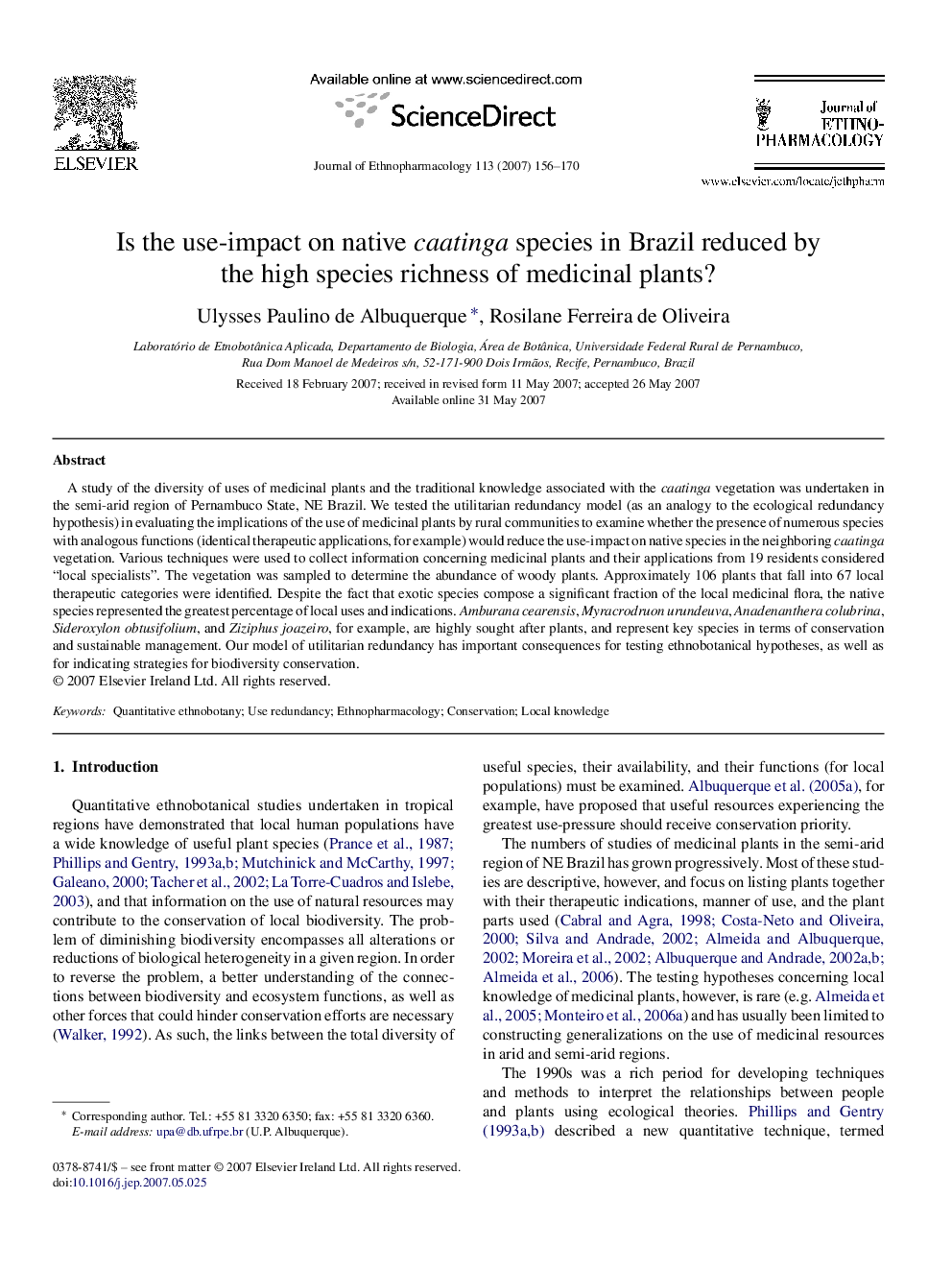| Article ID | Journal | Published Year | Pages | File Type |
|---|---|---|---|---|
| 2548145 | Journal of Ethnopharmacology | 2007 | 15 Pages |
A study of the diversity of uses of medicinal plants and the traditional knowledge associated with the caatinga vegetation was undertaken in the semi-arid region of Pernambuco State, NE Brazil. We tested the utilitarian redundancy model (as an analogy to the ecological redundancy hypothesis) in evaluating the implications of the use of medicinal plants by rural communities to examine whether the presence of numerous species with analogous functions (identical therapeutic applications, for example) would reduce the use-impact on native species in the neighboring caatinga vegetation. Various techniques were used to collect information concerning medicinal plants and their applications from 19 residents considered “local specialists”. The vegetation was sampled to determine the abundance of woody plants. Approximately 106 plants that fall into 67 local therapeutic categories were identified. Despite the fact that exotic species compose a significant fraction of the local medicinal flora, the native species represented the greatest percentage of local uses and indications. Amburana cearensis, Myracrodruon urundeuva, Anadenanthera colubrina, Sideroxylon obtusifolium, and Ziziphus joazeiro, for example, are highly sought after plants, and represent key species in terms of conservation and sustainable management. Our model of utilitarian redundancy has important consequences for testing ethnobotanical hypotheses, as well as for indicating strategies for biodiversity conservation.
